To build on #ThisIsUs Part One that we curated last year (July 2022), the second edition entailed nine cultural attires of women and girls, focusing on minority communities in South Sudan. This was a special edition; Gender Talk 211 team worked with five Ma’ Mara Sakit Village Community of young women journalists who attended a two-day training by Gender Talk 211 team members on using digital media as a feminist tool for storytelling and cultural preservation and co-created this series with us. The training included three main elements: Research, Vlogging, Illustration, and Graphic Design.
As in part one, a diverse group of South Sudanese women and girls were identified and took part in the photoshoot. This process was documented, highlighting challenges encountered and the importance of using digital media as a feminist tool for cultural preservation in a short video on the Gender Talk 211 YouTube channel. At the end of the digital curation, the Gender Talk 211 team organized an intimate conversation with women and girls. This event focused on the role of digital media in promoting and preserving culture through creative methods such as photography, visual art, graphic design, and vlogging, among others. The event also allowed the team to showcase the video highlighting insights into “This Is Us Part 2” production.
Access to knowledge and cultural attires remains challenging for many young South Sudanese within or outside South Sudan. The custodians of this valuable knowledge on cultural attires for various communities continue to age and, unfortunately, pass on with limited opportunities to share this information that is mainly accessed orally. This is why any efforts to document and digitize such knowledge is one of the core feminist priorities in South Sudan. On the other hand, photography, graphic design, illustration, etc., are male-dominated fields in South Sudan; the training was an opportunity and effort to contribute to slowly bridging this gap and encouraging more young women to venture into these fields.
For this round of curation, the series featured photographs of nine cultural attires of women and girls, focusing on minority communities in South Sudan to remind us that there is beauty and strength in diversity.
Didinga women wear two Foruas (a two-piece skirt-like wear made of goat hide/skin), one on the front called Ng’eret and one longer than the Ng’eret on the back called ceremi. Sometimes, instead of the Foruas, women wear ‘Tänura, a short skirt made with ruffles that resemble the two Foruas. They tie a cloth (Lawa style) over the attire called a Huri. This attire is worn with waist beads and head beads. The head beads are worn like a crown, and at the back of the head, a line of beads is attached that runs down from the back of the head to the lower back, and at the end of this line of beads, a small calabash is attached to it. The small calabash at the end of the crown beads usually has oil kept in it. The oil is used to smear the Foruas to keep them loose and long-lasting. The ornaments made from beads worn together with Ceremi are Nyeribirib,deelo, and Nyaboli. This attire is worn during weddings, dances, other special occasions, and funerals. During funerals, beads are worn crisscrossing as this signifies grieving, and no waist beads are worn. However, if the person was killed, the beads and belongings of the dead are worn during their funeral. A reddish mixture of red soil is usually spread on the head and the Foruas for weddings.
Sources: Pius Lokoro Matia and Eunice Nakiru, with support from Iye Winnie
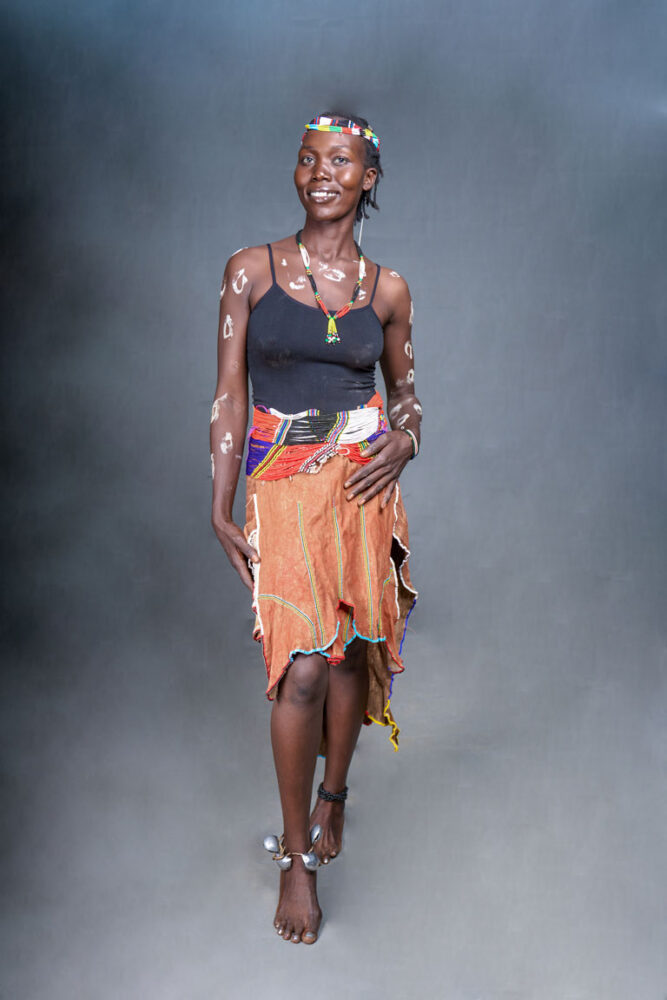
Moru Women/ girls wear Bula. It’s made from leaves of trees or animal skin. It covers the front and the behind. The leaves are tied on a rope and then tied around the waist. It used to be everyday wear, not necessarily for special occasions. As time passed, and primarily due to modernization, the traditional attire was neglected. Women now put on Tänura, a skirt with ruffles made from a piece of clothing. Others add leaves on top of the tänura, and others wear it just plainly. Women used to be bare-chested or tie a small amount of animal skin to cover their chests. The modernized version (tänura) is worn with a bra or vest with the addition of beads on the waist (two to three lines of beads), on the ankle, as bungles on the wrist, on the neck, and as earrings. No specific colors are used; you can choose any color for the outfit.
Sources: Eyada Evaline and Mama Florence
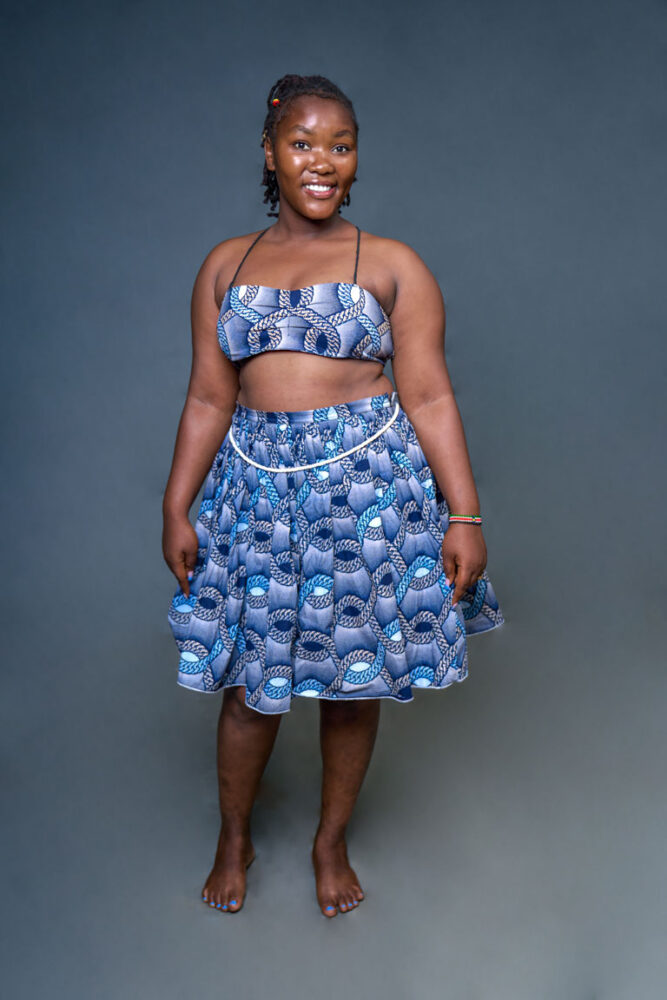
Back then, balanda women wore animal hide/skin made in the form of ‘Jabuna,’ which only covered the front and the buttocks. Girls wear the Jabuna plain, while women wear the Jabuna with zarak, a cloth covering the chest. This was everyday wear; however, during funerals, women replaced the Jabuna with tree leaves, which they tied around to cover their private parts, made in the same way as the Jabuna. Over time, with colonialism and modernization, the traditional attire has evolved. Today, instead of the animal hide/skin, women and girls use “Tänura,” a short skirt made with ruffles worn with vests, bras, or other clothes made into tops. It’s worn with so many layers of different beads on the neck, some across the chest, on the waist, and some as bracelets on the wrists. Sometimes, women carry small beaded gourds on their arms in addition to beaded accessories. There is no specific color of the attire used; people make their attire based on their color preference and accessorize it with different beads of their choice.
Sources: Monica Beda, with support from Asan Juma
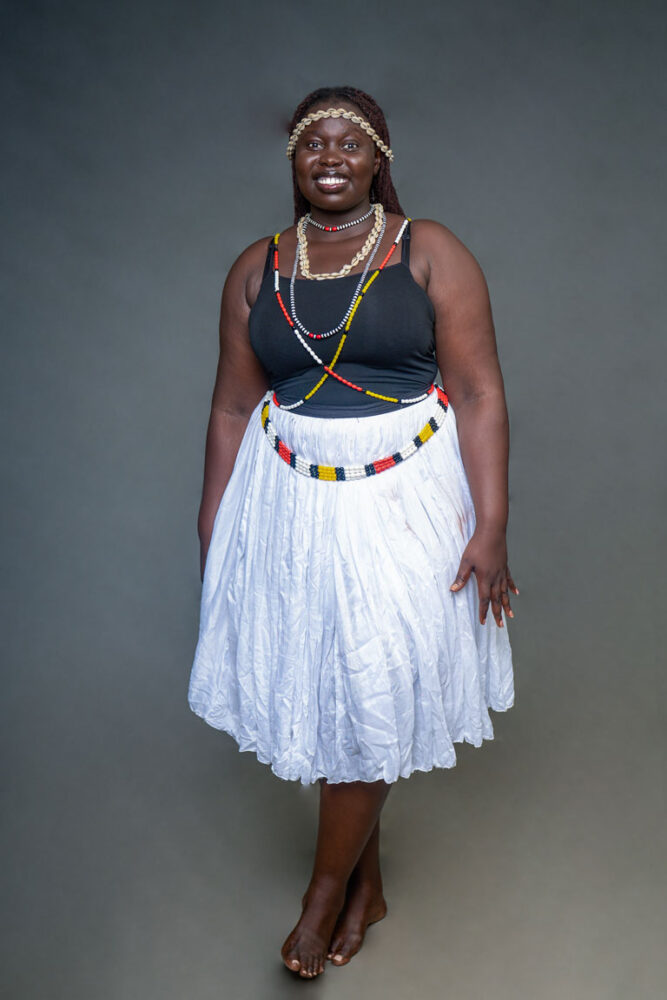
The Luo tribe in South Sudan is in the Bahr El Ghazal region. Their traditional attire is “waara” in the Luo dialect (Dholou). This attire is worn by women and girls around their waist in various forms known as “Ajugo” for women and “Ajam” for girls. It incorporates beads in different colors, such as green, blue, white, black, red, yellow, grey, and brown. These beads are used to enhance the beauty of women and girls. In other South Sudanese languages, this attire is called “Athuur” or “La-waah.” The Luo Bahr el Ghazal community has various names like “Ajam Ajugo abongo Ayuara,” “Tamura Arag,” “Juan Rhedà,” and more. The attire is worn by women, girls, and even young children of all ages, including infants. There is no specific time for wearing it, but it is predominantly worn during traditional dances and special occasions when different attire is worn.
Sources: Kon Biama Kur Dimo The Lou community Bahr el Ghazal Cultural Association chairperson, James Kang, and Members of the Luo community in Juba, with the support of Sebila Sebit.
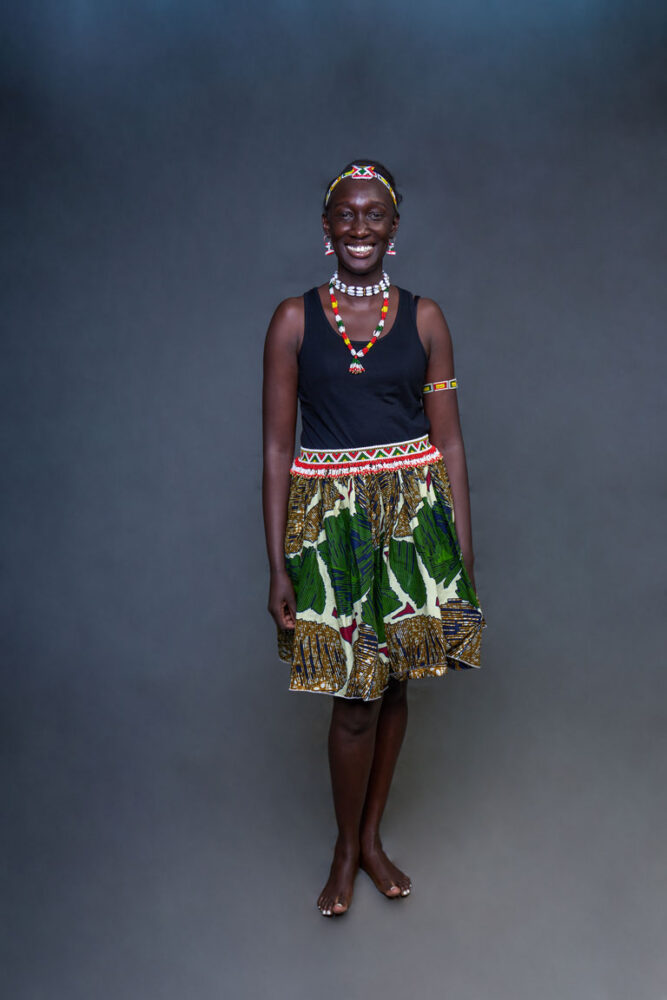
The Tennet cultural attires are unique outfits made with beads, each with its name. The Gama is a beaded blouse or top, while the Kulo is a beaded skirt. Emunya refers to the beaded pieces worn on top of the Kulo skirt, and Epok are beads worn on the stomach. Torkou represents the beads worn on the head. These cultural attires are not limited to specific age groups and are worn by girls, married women, and older women. They are commonly worn during weddings, celebrations, and funerals, but there is no specific occasion for wearing them.
Sources: Mama Radio with support from Osfaldo.
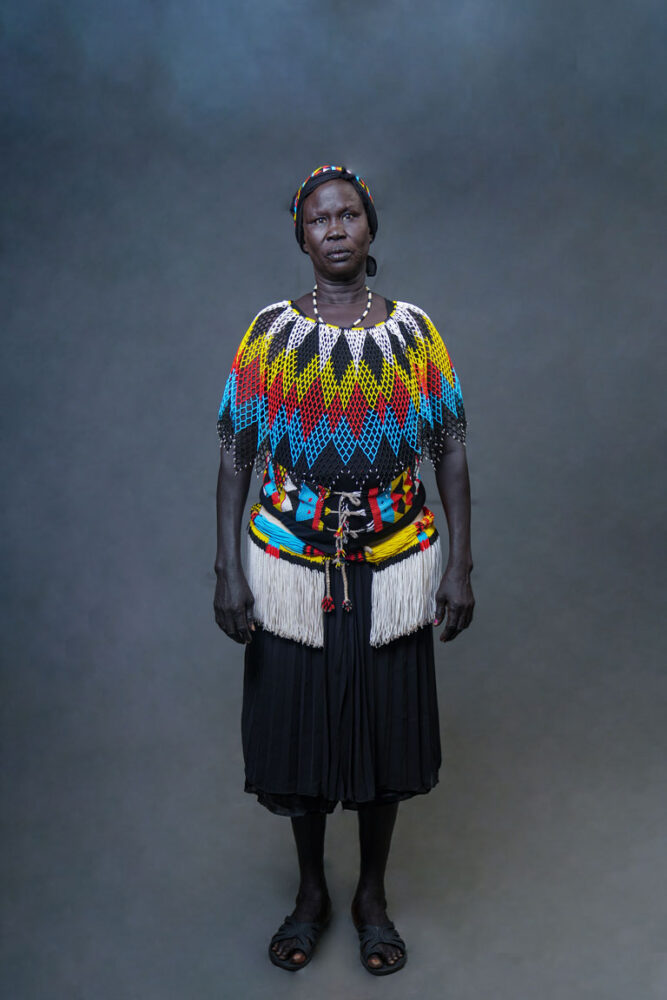
The Nyangwara people reside in Rokon Payam, in the Central Equatorial State of South Sudan. In the past, the Nyangwara people adorned themselves with leaves and stems from climbing trees. These natural materials were utilized as threads for decorating women and girls. Additionally, men would wear Kodekat, a cloth wrapped around their waist. They also wore animal teeth as beads around their necks. However, with the advent of modernization, the Tänura became a popular attire among the tribes of South Sudan, including the Nyangwara. Individuals now also tie cloth around their chests or wear t-shirts. Both women and girls wear Tänura, which the Nyangwara commonly wears during traditional ceremonies such as weddings and traditional dances. This clothing is suitable for individuals of all ages. The Nyangwara people embraced the use of beads, which have become a popular accessory among the South Sudanese. These beads are primarily worn around the waist and neck and come in lime green, green, and pink colors. Unlike some other cultural symbols, these beads do not hold a specific meaning and are worn by both women and girls.
Sources: Lukule Rokon, Nyangwara Community Leader With support from Kulang
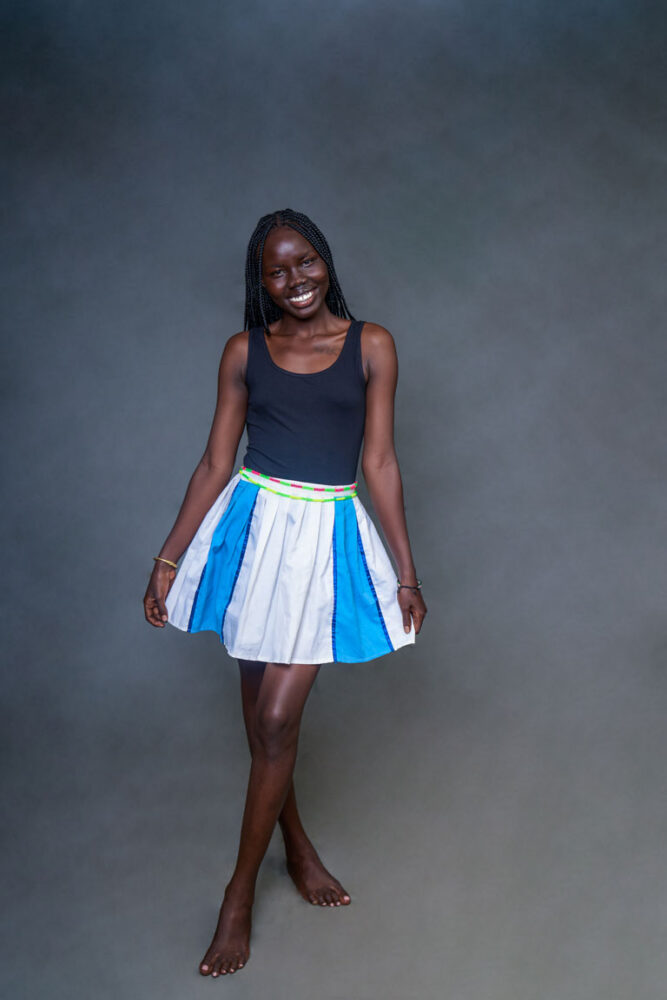
Murle women and older girls wear Charam, a skirt made of goat skin. This is worn with beads, the headpiece called Tulunya, waist beads called Calbe ci Barkonyo, and others around the neck and arms. A skirt can be substituted for Charam. Age sets are a vital part of Murle culture; each generation has a different color that wives and daughters wear. Different colors represent different age groups. Wives wear the husband’s group’s colors, while unmarried girls wear their father’s or to-be husbands’ colors. In the old days, younger girls would not wear anything besides beads around the waist that only covered the private parts and buttocks. A unique piece called ‘Nyathia’ is made of cowrie shells and is mainly worn during dances. The Nyathia represents wealth, and a girl without it is considered poor. Today, young girls wear a Lawo and underwear. Bras are meant for older/married women, and younger girls are not encouraged to wear them. Beads are now only worn for dances and special occasions. Married or older women now wear Jalabiya and Lawo for everyday wear.
Source: Mama Tabitha Nyakindi

The Ma’dí people come from Eastern Equatoria State, South Sudan, and the Uganda districts of Adjumani and Moyo. The Ma’di women wear beautiful ruffle skirts (Tänura) called Jorse, often designed with a leopard skin print; however, today, different modern fabrics are used to make the jorse. It is currently worn with a T-shirt or vest on as a top. They accessorize their Jorse using colorful beads (big beads) called Miyo, which loosely translate to beads. These beads do not have any specific color; they can be of assorted colors depending on personal preferences. However, there is essentially a preference for black and white beads. The beads are worn on the waist and neck and used during the dances to create a melodic sound by using a plate in an up-down motion against the beads. They also wear feet jingles known as mbiri and hold a hand drum called Kengere. They also apply ashes for skin decoration, and a cow’s tail is commonly worn too.
Ma’di women wear their cultural attire only during cultural dances, such as at cultural events, weddings, and even naming ceremonies. They wear the cultural attire during the Mure, Gai, and Kejua dances. Mure is performed on various occasions, including celebrating victories in war, the birth of a king, and during periods of mourning, such as the death of a king or the loss of land in times of war. Mure and Kejua dances are for older women and girls, while youthful men and women dance Gai. During these dances, they use traditional flute-like instruments such as the Udiri, Ture, and Limba. Nowadays, modern variations of Jorse incorporate different colors and prints.
Sources: Gladys and Grace Achan, with support from Winnie Iye
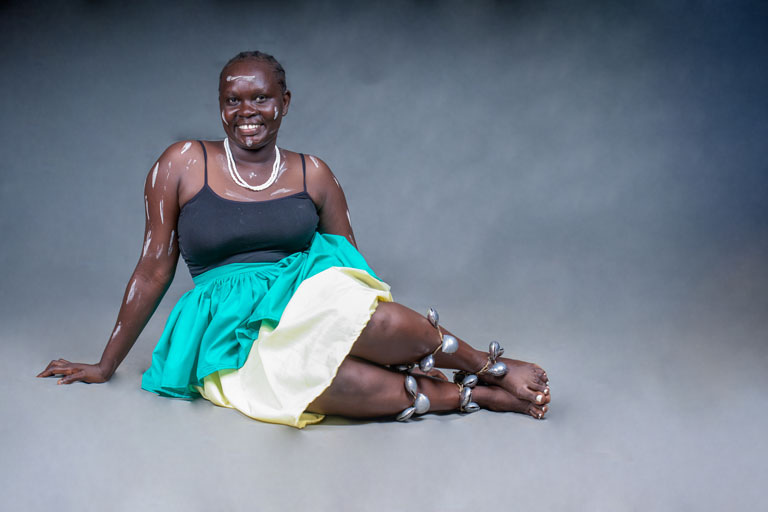
Anyuak women and girls wear traditional attire during special occasions like weddings and dances. The attire is made of a skirt called “Ataga,” a cloth decorated with different colors of beads. A waist bead known as “Aliga” and smaller ones called “Nyiwudi” are often added to the skirt. A headpiece called “Ungwero” is worn on the head, and layers of beads are used as necklaces to access the attire. One of the necklaces used to be made of giraffe tail hair called “Win”; however, today, the Anyuak community recognizes that using giraffe tail hair is now illegal and continues to improvise. They also wear a white necklace called “Awago.” This is typically worn by young women in relationships. Another is a burnt orange bead called “Dicic,” worn by engaged girls or young women. Wristwatches known as “Cingca” are used as additional accessories. There is no age limit for wearing this attire; everyone in the community wears it.
Fun Fact: The king and chiefs carry a stick called “Om’a,” symbolizing authority, and a decorative bowl called “Awal” is often used for ornamentation.
Source – Meet Ojwok Lero, Anyuak Youth Leader, with support from Hon.Munira
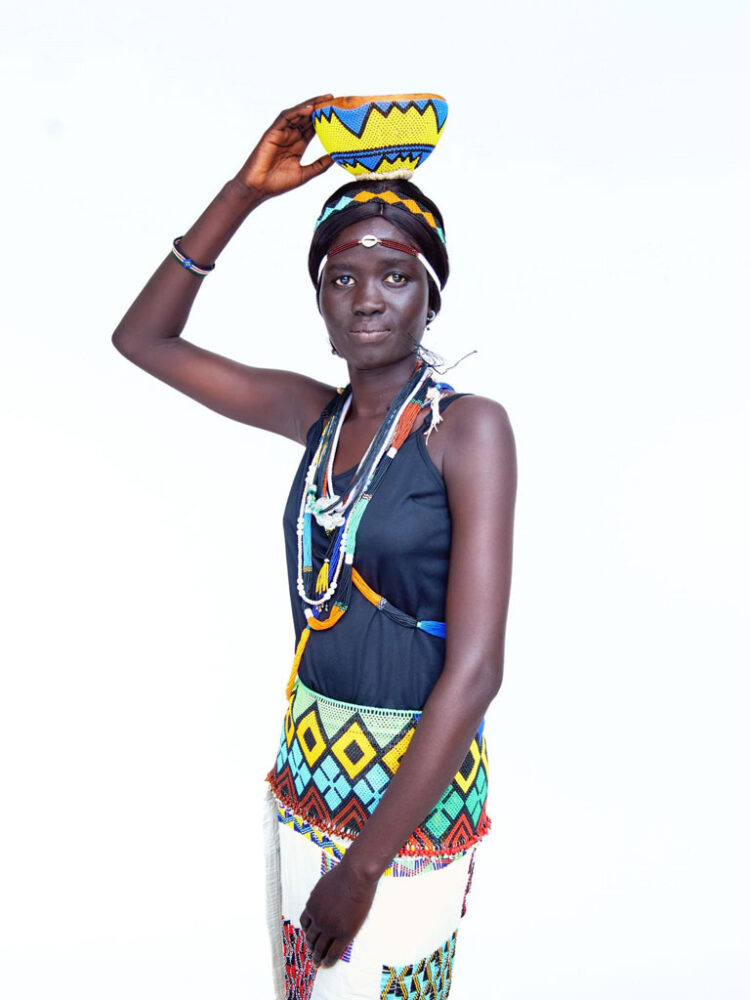
Huda Izedin, Alual Marial Maker, Deborah Yar Juma, Awizia Zita, and Alakiir Chol
Poni Wani, Adeng Malual, Christine Nelson, Adit Manyok, Huda Izedin, Galawere Moira, Alakiir Chol, Mama Radio Angelo, and Gisma Ajiba.
Eva Lopa and Charity Naji
Megan Anyango
Joseph Kudumoch/Kuku Media and Mahandis Magic

GenderTalk211 is an African feminist traditional and multimedia platform that facilitates wholesome conversations on gender and sexuality.
© 2022. GenderTalk211, South Sudan. All Rights Reserved.
| Cookie | Duration | Description |
|---|---|---|
| cookielawinfo-checkbox-analytics | 11 months | This cookie is set by GDPR Cookie Consent plugin. The cookie is used to store the user consent for the cookies in the category "Analytics". |
| cookielawinfo-checkbox-functional | 11 months | The cookie is set by GDPR cookie consent to record the user consent for the cookies in the category "Functional". |
| cookielawinfo-checkbox-necessary | 11 months | This cookie is set by GDPR Cookie Consent plugin. The cookies is used to store the user consent for the cookies in the category "Necessary". |
| cookielawinfo-checkbox-others | 11 months | This cookie is set by GDPR Cookie Consent plugin. The cookie is used to store the user consent for the cookies in the category "Other. |
| cookielawinfo-checkbox-performance | 11 months | This cookie is set by GDPR Cookie Consent plugin. The cookie is used to store the user consent for the cookies in the category "Performance". |
| viewed_cookie_policy | 11 months | The cookie is set by the GDPR Cookie Consent plugin and is used to store whether or not user has consented to the use of cookies. It does not store any personal data. |